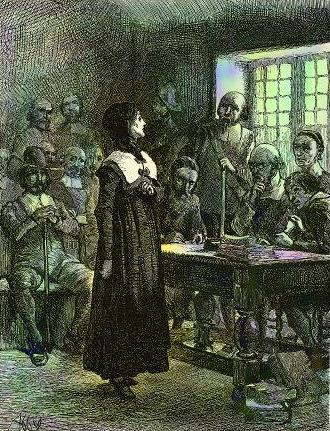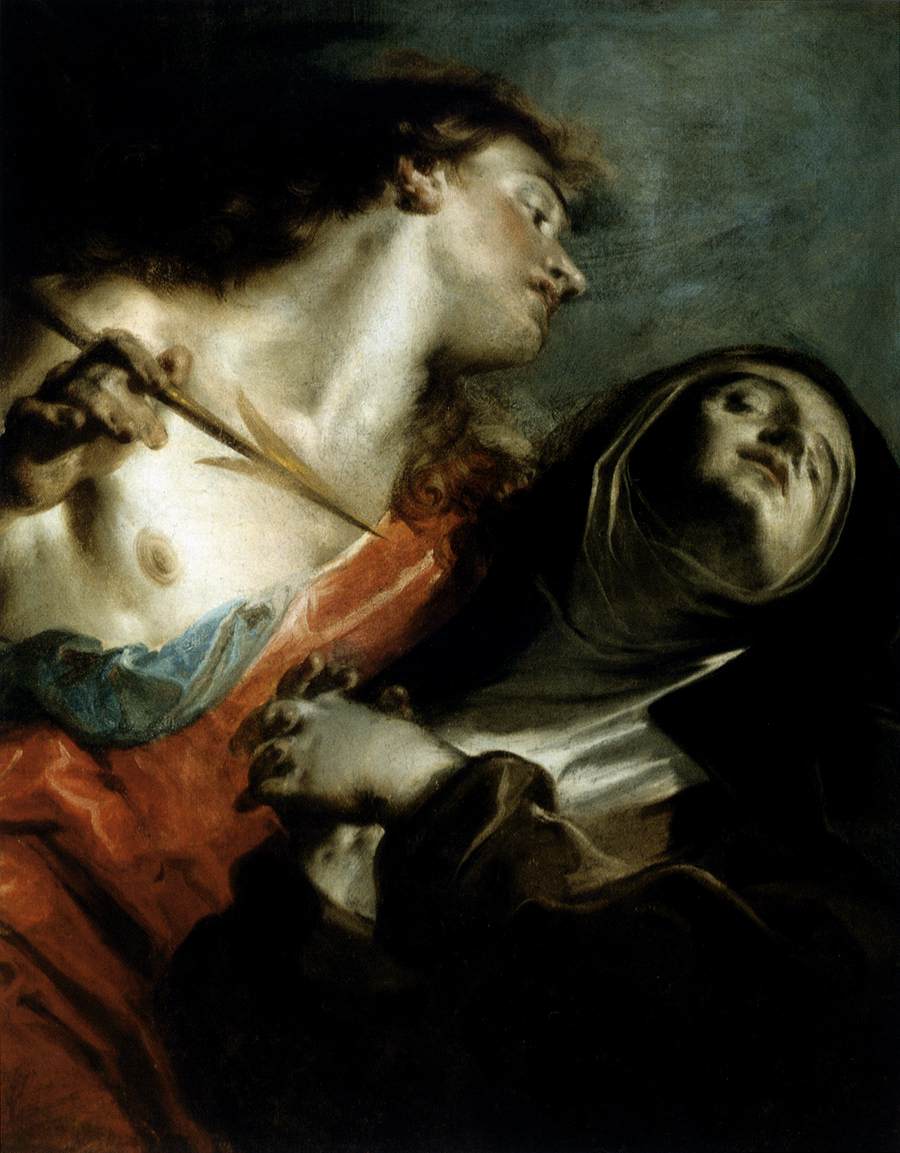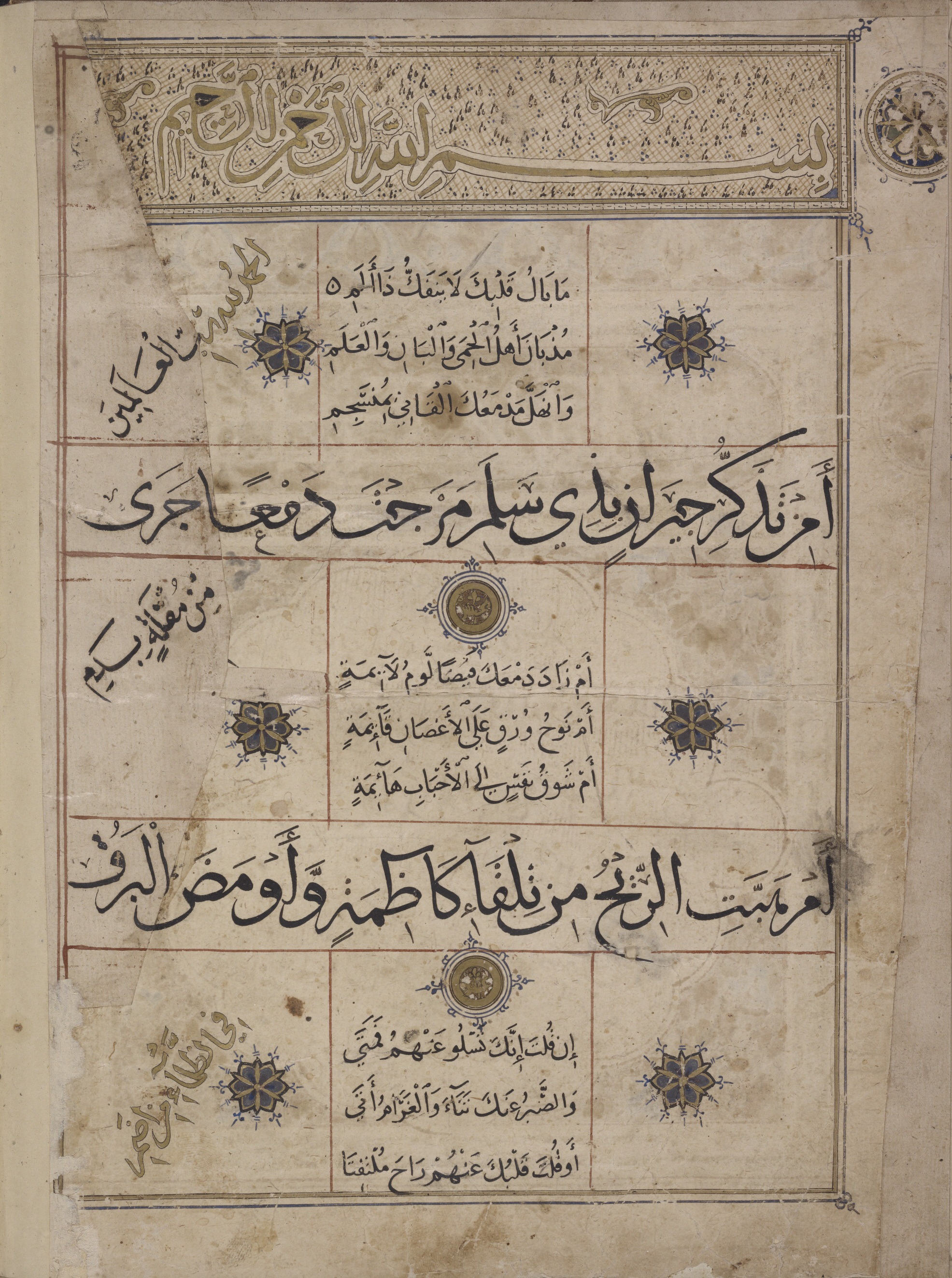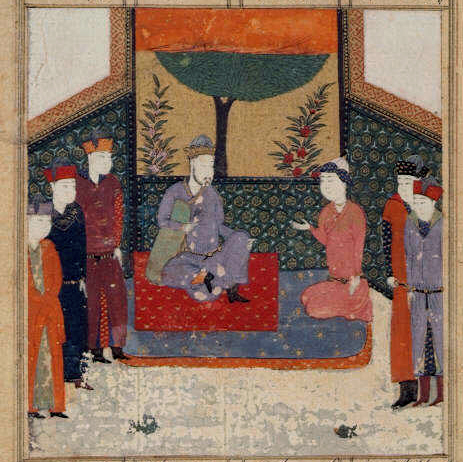|
Shath
A ''shath'' ( ar, شطح ''šaṭḥ'', plural: ''šaṭaḥāt'' or ''šaṭḥiyyāt''), in the Islamic mystical tradition of Sufism, is an ecstatic utterance which may be outrageous in character. The word is derived from the root š-ṭ-ḥ, which carries the sense of overflowing or outpouring caused by agitation. Famous ''shathiyat'' include “Glory be to me, how great is my majesty” by Bayazid Bastami and “I am the Truth” by Mansur Al-Hallaj. Sufi authors sometimes claimed that such utterances were misquotations or attributed them to immaturity, madness, or intoxication. At other times they regarded them as authentic expressions of spiritual states, even profoundest experience of divine realities, which should not be manifested to the unworthy. Many Sufi authors, including al-Ghazali, showed ambivalence about apparently blasphemous nature of some ''shathiyat'', while admiring the spiritual status of their authors. The heyday of ''shath'' occurred during the classic ... [...More Info...] [...Related Items...] OR: [Wikipedia] [Google] [Baidu] |
|
 |
Mansur Al-Hallaj
Al-Hallaj ( ar, ابو المغيث الحسين بن منصور الحلاج, Abū 'l-Muġīth Al-Ḥusayn bin Manṣūr al-Ḥallāj) or Mansour Hallaj ( fa, منصور حلاج, Mansūr-e Hallāj) ( 26 March 922) ( Hijri 309 AH) was a Persian mystic, poet, and teacher of Sufism.Jawid Mojaddedi, "ḤALLĀJ, ABU'L-MOḠIṮ ḤOSAYN b. Manṣur b. Maḥammā Bayżāwi" i''Encyclopedia Iranica''/ref> He is best known for his saying: "I am the Truth" (Ana'l-Ḥaqq), which many saw as a claim to divinity, while others interpreted it as an instance of annihilation of the ego, allowing God to speak through him. Al-Hallaj gained a wide following as a preacher before he became implicated in power struggles of the Abbasid court and was executed after a long period of confinement on religious and political charges. Although most of his Sufi contemporaries disapproved of his actions, Hallaj later became a major figure in the Sufi tradition. Life Early years Al-Hallaj was born a ... [...More Info...] [...Related Items...] OR: [Wikipedia] [Google] [Baidu] |
|
Ruzbihan Baqli
Abu Muhammad Sheikh Ruzbehan Baqli (1128–1209) was a Persian poet, mystic, teacher and sufi master. He wrote about his own life as well as published commentaries on Sufi poets and ideas. Baqli's most renowned work was his autobiography ''Unveiling of Secrets'' or ''Kashf al-asrar.'' Life Ruzbihan Baqli was born in 1128 to a family of Daylamite origin in Fasa in what is today Iran. As a teenager, Baqli worked as a grocer. Although Baqli claimed to have had religious visions at ages three, seven, and fifteen, he said that his family was not religious. He described these visions as dreams and powerful ecstasies in ''The Unveiling of Secrets''. At age 15, Baqli left Fasa to spend 18 months in desert, during which time he claimed to receive more visions. After leaving the desert, he joined a Sufi sect. In ''The Unveiling of Secrets,'' Baqli says he had his first "unveiling" while training with the Sufis. He eventually returned to Fasa to seek a master and spiritual guide; ... [...More Info...] [...Related Items...] OR: [Wikipedia] [Google] [Baidu] |
|
|
Crazy Wisdom
Divine madness, also known as ''theia mania'' and crazy wisdom, refers to unconventional, outrageous, unexpected, or unpredictable behavior linked to religious or spiritual pursuits. Examples of divine madness can be found in Hellenism, Christianity, Hinduism, Buddhism, Sufism, and Shamanism. It is usually explained as a manifestation of enlightened behavior by persons who have transcended societal norms, or as a means of spiritual practice or teaching among mendicants and teachers. These behaviors may seem to be symptoms of mental illness to mainstream society, but are a form of religious ecstasy, or deliberate "strategic, purposeful activity," "by highly self-aware individuals making strategic use of the theme of madness in the construction of their public personas". Cross-cultural parallels According to June McDaniel and other scholars, divine madness is found in the history and practices of many cultures and may reflect religious ecstasy or expression of divine love. Plato ... [...More Info...] [...Related Items...] OR: [Wikipedia] [Google] [Baidu] |
|
 |
Antinomianism
Antinomianism (Ancient Greek: ἀντί 'anti''"against" and νόμος 'nomos''"law") is any view which rejects laws or legalism and argues against moral, religious or social norms (Latin: mores), or is at least considered to do so. The term has both religious and secular meanings. In some Christian belief systems, an antinomian is one who takes the principle of salvation by faith and divine grace to the point of asserting that the saved are not bound to follow the moral law contained in the Ten Commandments. The distinction between antinomian and other Christian views on moral law is that antinomians believe that obedience to the law is motivated by an internal principle flowing from belief rather than from any external compulsion. John Eaton, a leader in the antinomian underground during the 1630s, interpreted Revelation 12:1 with a quote recorded by Giles Firmin: ''"I saw a Woman Clothed with the Sun'' hat is, the Church Clothed with the righteousness of Christ, to her ... [...More Info...] [...Related Items...] OR: [Wikipedia] [Google] [Baidu] |
.jpg) |
Islam
Islam (; ar, ۘالِإسلَام, , ) is an Abrahamic monotheistic religion centred primarily around the Quran, a religious text considered by Muslims to be the direct word of God (or ''Allah'') as it was revealed to Muhammad, the main and final Islamic prophet.Peters, F. E. 2009. "Allāh." In , edited by J. L. Esposito. Oxford: Oxford University Press. . (See alsoquick reference) " e Muslims' understanding of Allāh is based...on the Qurʿān's public witness. Allāh is Unique, the Creator, Sovereign, and Judge of mankind. It is Allāh who directs the universe through his direct action on nature and who has guided human history through his prophets, Abraham, with whom he made his covenant, Moses/Moosa, Jesus/Eesa, and Muḥammad, through all of whom he founded his chosen communities, the 'Peoples of the Book.'" It is the world's second-largest religion behind Christianity, with its followers ranging between 1-1.8 billion globally, or around a quarter of the world' ... [...More Info...] [...Related Items...] OR: [Wikipedia] [Google] [Baidu] |
.jpg) |
Ibn Arabi
Ibn ʿArabī ( ar, ابن عربي, ; full name: , ; 1165–1240), nicknamed al-Qushayrī (, ) and Sulṭān al-ʿĀrifīn (, , ' Sultan of the Knowers'), was an Arab Andalusian Muslim scholar, mystic, poet, and philosopher, extremely influential within Islamic thought. Out of the 850 works attributed to him, some 700 are authentic while over 400 are still extant. His cosmological teachings became the dominant worldview in many parts of the Muslim world. His traditional titular is ''Muḥyīddīn'' ( ar, محيي الدين; ''The Reviver of Religion''). After he passed away, among practitioners of sufism he is renowned by the honorific title ''Shaykh al-Akbar'' ( ar, الشيخ الأكبر) which the "Akbarian" school derives its name, and make him known as ''Doctor Maximus'' (The Greatest Teacher) in medieval Europe. Ibn ʿArabī was considered as a saint by some scholars and Muslim community. Al-Suyuti, Tanbih al-Ghabi fi Tanzih Ibn ‘Arabi (p. 17-21) Biography Ibn ʿA ... [...More Info...] [...Related Items...] OR: [Wikipedia] [Google] [Baidu] |
 |
Sarmad Kashani
Sarmad Kashani, or simply Sarmad (ca. 1590–1661) was a Persian-speaking Armenian mystic and poet who travelled to and made the Indian subcontinent his permanent home during the 17th century. Originally Jewish, he may have renounced his religion to adopt Islam. However "his conversion was probably only nominal and superficial, since he himself later warned the Jews not to convert themselves". Sarmad, in his poetry, states that he is neither Jewish, nor Muslim, nor Hindu. Early life Sarmad was born in Armenia around 1590, to a family of Jewish Persian-speaking Armenian merchants. Sarmad had an excellent command of Persian, essential for his work as a merchant, and composed most of his works in this language. He produced a translation of the Torah in Persian. He studied under Mulla Sadra and Mir Findiriski before migrating to the Mughal Empire as a merchant. Travels in the Mughal Empire Hearing that precious items and works of art were being purchased in India at high prices, S ... [...More Info...] [...Related Items...] OR: [Wikipedia] [Google] [Baidu] |
 |
Divine Ecstasy
Religious ecstasy is a type of altered state of consciousness characterized by greatly reduced external awareness and expanded interior mental and spiritual awareness, frequently accompanied by visions and emotional (and sometimes physical) euphoria. Although the experience is usually brief in time, there are records of such experiences lasting several days or even more, and of recurring experiences of ecstasy during one's lifetime. In Sufism, the term is referred to as '' wajad'' and the experience is referred to as either ''jazbah (jadbah o jedbah for Maghreb)'' or ''majzoobiyat''. Context The adjective "religious" means that the experience occurs in connection with religious activities or is interpreted in context of a religion. Journalist Marghanita Laski writes in her study "Ecstasy in Religious and Secular Experiences", first published in 1961: "Epithets are very often applied to mystical experiences including ecstasies without, apparently, any clear idea about the di ... [...More Info...] [...Related Items...] OR: [Wikipedia] [Google] [Baidu] |
|
Ayn Al-Quzat Hamadani
Ayn-al-Qużāt Hamadānī, also spelled Ain-al Quzat Hamedani or ʿAyn-al Qudat Hamadhani (1098–1131) ( fa, عین القضات همدانی), full name: Abu’l-maʿālī ʿabdallāh Bin Abībakr Mohammad Mayānejī ( fa, ابوالمعالی عبدالله بن ابیبکر محمد میانجی), was a Persian jurisconsult, mystic, philosopher, poet and mathematician who was executed at the age of 33. Title ''Ayn-al-Qużat'' in Arabic means "the pearl of the judges": ''Ayn'' means the eye, implying something very valuable, and ''Qozat'' is the plural of ''Qadi'', which means judge. Life He was born in Hamedan and his ancestors were of Hamedan judges. He was a disciple of Ahmad Ghazali and devoted of Hallaj. He became a famous scholar at early age, and by the time he was thirty he was chosen to be a judge. Along with Abu Hamed Al-Ghazali, he is one of the founders of doctrinal Sufism. According to some accounts, he was briefly a pupil of Omar Khayyam. Upon his r ... [...More Info...] [...Related Items...] OR: [Wikipedia] [Google] [Baidu] |
|
|
Zindīq
Zindīq (pl. zanādiqa) is a medieval Islamic term applied by Muslims to individuals who are considered to hold views or follow practices that are contrary to central Islamic dogmas.. Zandaqa is the noun describing these views. Zanadiqa is usually translated as "heresy" and often used to "underscore the seriousness" of the religious error of the accused Muslim. It originally referred to the Manichaean Religion, but "soon came" to be applied to Muslims who concealed their deviant beliefs. Under the Abbasids The Arabic ''zindīq'' is a loan word from pre-Islamic Middle Persian 𐭦𐭭𐭣𐭩𐭪 ''zandik'', a Zoroastrian term of uncertain etymology and meaning (for a discussion of the term in a pre-Islamic context, see ''zandik''). Zindīq (زنديق) or Zandik (𐭦𐭭𐭣𐭩𐭪) was initially used to negatively denote the followers of the Manichaeism religion in the Sasanian Empire. By the time of the eighth-century Abbasid Caliphate however, the meaning of the word zind ... [...More Info...] [...Related Items...] OR: [Wikipedia] [Google] [Baidu] |
|
 |
Sufi Poetry
Sufi literature consists of works in various languages that express and advocate the ideas of Sufism. Sufism had an important influence on medieval literature, especially poetry, that was written in Arabic, New Persian, Persian, Turkic languages, Turkic and Urdu. Sufi doctrines and organizations provided more freedom to literature than did the court poetry of the period. The Sufis borrowed elements of folklore in their literature. The works of Nizami Ganjavi, Nizami, Ali-Shir Nava'i, Nava'i, Hafez, Aḥmad Samʿānī, Sam'ani and Jami were more or less related to Sufism. The verse of such Sufi poets as Sanai (died c. 1140), Attar of Nishapur, Attar (born c. 1119), and Rumi (died 1273) protested against oppression with an emphasis on divine justice and criticized evil rulers, religious fanaticism and the greed and hypocrisy of the orthodox Muslim clergy. The poetic forms used by these writers were similar to the folk song, parable and fairy tale. Background Sufi literature writte ... [...More Info...] [...Related Items...] OR: [Wikipedia] [Google] [Baidu] |
 |
Farid Al-Din Attar
Abū Ḥamīd bin Abū Bakr Ibrāhīm (c. 1145 – c. 1221; fa, ابو حامد بن ابوبکر ابراهیم), better known by his pen-names Farīd ud-Dīn () and ʿAṭṭār of Nishapur (, Attar means apothecary), was a PersianRitter, H. (1986), “Attar”, Encyclopaedia of Islam, New Ed., vol. 1: 751-755. Excerpt: "ATTAR, FARID AL-DIN MUHAMMAD B. IBRAHIM.Persian mystical poet.Farīd al-Dīn ʿAṭṭār, in Encyclopædia Britannica, online edition - accessed December 2012./ref> poet, theoretician of Sufism, and hagiographer from Nishapur who had an immense and lasting influence on Persian poetry and Sufism. He wrote a collection of lyrical poems and number of long poems in the philosophical tradition of Islamic mysticism, as well as a prose work with biographies and sayings of famous Muslim mystics. Manṭiq-uṭ-Ṭayr (''The Conference of the Birds)'' and ''Ilāhī-Nāma'' (''The Book of Divine)'' and Memorial of the Saints are among his best known works. Biography ... [...More Info...] [...Related Items...] OR: [Wikipedia] [Google] [Baidu] |